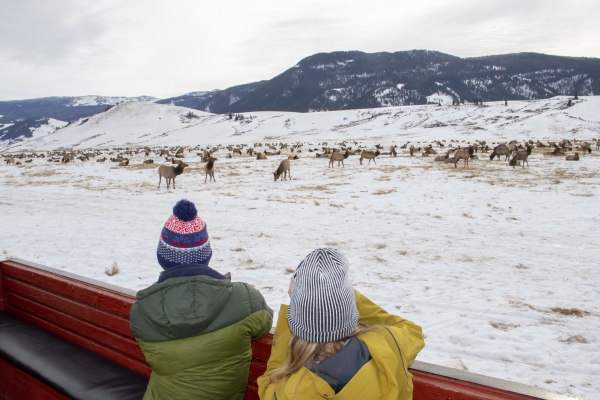
“Watching birds has sharpened my senses, made my hearing far more acute than most, my eyes more perceptive, my reactions quicker. This awareness has radiated far beyond the birds, embracing nearly everything that is alive, from my fellow humans to the least beetle or cricket” (Roger Tory Peterson speech to the NYS Legislature, Albany, NY, June 17, 1987).
Opportunities for wildlife observation are located at or along the following places:
- the Wildlife Viewing Area
- Refuge Headquarters/Visitor Center area
- Kenai Nature Trail
- Wildfowl Lane (the county road that runs through the refuge).
The Refuge is a very small part (~.02%) of the large amount of the public land base, about 77%, located in Ravalli County. Yet, the Refuge contains >20 % of the palustrine wetlands in the Bitterroot Valley or about 1,000 acres. So, expect to find a good assortment of wetland associated species when wildlife watching here. Refuge Headquarters, the Kenai Nature Trail and Wildfowl Lane are places with ample opportunity to do so.
The gallery forest on the Refuge (well represented at the Wildlife Viewing Area) seems comparable to much of this habitat type found along the 120 mile length of the Bitterroot River. Though similar, plant and animal life is not uniformly distributed over these lands; in many cases species are local and subject to annual variation. Neotropical bird species best describe what birders could look for here. An excellent online publication from the Bitterroot Birding and Nature Trail will provide you with an overview of wildlife to look for, both on the Refuge and at 24 other places in the Bitterroot Valley.
The upland areas of the Refuge are mostly former croplands. Restoration efforts by Refuge staff over the last several years are gradually getting these lands into a condition reflecting historic bunchgrass/shrubsteppe habitat type.
Review the Refuge Species List and then call, email Refuge staff (Contact page) for particulars. The Refuge has a Wildlife Checklist that is dated and out of print, but still provides a fairly accurate/useful overview of what can be found on the Refuge.
Lastly, please reflect, be mindful of your behaviors, actions when wildlife watching. On a National Wildlife Refuge the welfare of plants and animals and their habitats come first. The American Birding Association has a Code of Ethics for you to consider and adopt. Similarly, the Mindful Birding Project has a compilation of ethical birding guidelines for "birders to have gratifying experiences while maintaining the ability of birds to behave naturally".